NRR:中国华山医院郑娅团队揭示神经根磁性刺激通过上升感觉通路增强损伤脊髓突触可塑性的机制
撰文:郑娅,曹凌云,赵丹,杨琦,顾春雅,毛也然,朱光跃,朱玉连,赵静,许东升
脊髓损伤后,由于控制运动的相关神经传导通路受阻,会导致大脑皮质运动区灵敏度降低,从而导致患者出现运动和感觉功能障碍[1]。如果不及时干预,甚至会导致残疾,严重影响患者的身心健康和日常生活[2]。然而,由于损伤后存在缺血、氧化应激、炎症、组织坏死和空洞等复杂病理过程[3],自发性神经功能恢复和慢性期治疗效果有限,因此脊髓损伤的康复治疗是一项巨大的医学挑战。因此,开发针对慢性脊髓损伤患者的潜在康复技术(如神经调控)至关重要。
改善神经可塑性可以从根本上提高运动能力,实现最大程度的功能重塑[4]。经颅磁刺激是一种高效的非侵入性神经调控技术,已被证明可调节皮质和皮质下结构中特定神经网络的神经生理活动和突触效能[5],并促进皮质脊髓束的突触可塑性[6-8]。在临床上的应用可能会受到植入钢板或钉子的限制。因此,改进刺激范例对恢复脊髓损伤后的运动功能至关重要。以神经根为新刺激靶点的神经根磁刺激可被证实通过促进损伤脊髓的神经传导和感觉运动皮质突触超微结构的恢复来改善运动功能[9]。然而,人们对神经根磁刺激在脊髓中促进运动功能恢复的神经生理机制知之甚少,对神经可塑性的作用尚不明确。
来自中国华山医院郑娅团队在《中国神经再生研究(英文)》(Neural Regeneration Research)上发表了题为“Nerve root magnetic stimulation regulates the synaptic plasticity of injured spinal cord by ascending sensory pathway”的文章。研究发现,与对照组相比,接受神经根磁刺激的大鼠降低了炎症因子(白细胞介素1β、白细胞介素6 和肿瘤坏死因子α)的水平,减少了神经元损伤和胶质瘢痕形成,增加了损伤脊髓中的神经元数量。此外,磁刺激减少了神经递质(乙酰胆碱、谷氨酸和多巴胺)的释放,并影响与突触可塑性相关蛋白通路(PSD95,GAP43和SynapsinII)。研究结果表明,神经根磁刺激可缓解神经元损伤,增强突触结构和功能的可塑性,并抑制损伤脊髓的炎症反应。这些发现为脊髓损伤患者的临床应用提供了证据。
原发性脊髓损伤后,会产生细胞丢失、神经纤维传导束中断、脱髓鞘等情况,随后会造成一系列复杂的继发性损伤[10, 11]。其中,炎症因子是脊髓损伤后继发性损伤中炎症反应的有力生物标志物。近年来的研究发现,随着损伤改善,肿瘤坏死因子α水平明显下降[12]。此外,白细胞介素1β被认为是增加脊髓损伤炎症和神经胶质瘢痕组织形成的关键参与者[13]。因此,实验首先观察了神经根磁刺激干预是否对脊髓损伤后有抑制大鼠脊髓受损区域的炎症反应。此次研究结果与之相符。神经根磁刺激有利于抑制脊髓损伤炎症反应(图1),对预测神经功能恢复具有指导意义。

图1 神经根磁刺激可抑制大鼠脊髓损伤区的炎症反应(图源:Zheng et al., Neural Regen Res, 2025)
继发性损伤的病理变化会导致脊髓组织和结构形态发生变化,形成神经胶质瘢痕和囊肿,减弱髓鞘和轴突内源性再生能力[14],从而导致永久性神经功能障碍[15]。以往研究显示,重复经脊髓磁刺激可通过减少囊腔的形成和改善脊髓损伤后轴突的存活率来调节病变瘢痕[16]。此次研究结果表明,神经根磁刺激治疗可减轻神经元损伤并抑制神经胶质瘢痕的形成(图2)。也与团队既往研究结果,神经环路磁刺激可减轻星形胶质细胞的活化和胶质瘢痕的形成相符合[17]。
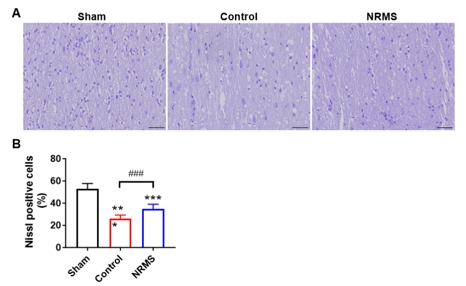
图2 神经根磁刺激可缓解脊髓损伤病变部位的神经元损伤(图源:Zheng et al., Neural Regen Res, 2025)
神经元环路的完整性是维持神经元之间正常交流的结构基础。损伤后,由于胶质瘢痕的形成,受伤区域神经元回路的完整性受到破坏,导致神经元和树突数量减少。该研究结果表明,神经根磁刺激可有效缓解脊髓损伤对神经元树突的影响,调节突触可塑性,有助于脊髓神经元回路的重建(图3)。
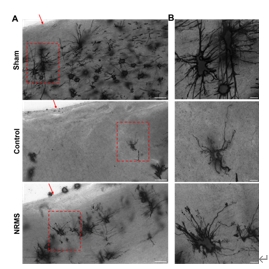
图3 神经根磁刺激 可增加脊髓压迫区的神经元和树突数量(图源:Zheng et al., Neural Regen Res, 2025)
除突触结构可塑性之外,功能可塑性也是突触可塑性的重要组成部分,它体现在突触传递效率的增强或减弱上。神经递质对损伤后神经环路的重建也有重要影响。以往研究显示,乙酰胆碱、谷氨酸、多巴胺[18, 19]。该研究结果表明,神经根磁刺激治疗后,病变部位的乙酰胆碱、谷氨酸和多巴胺下调,这表明神经根磁刺激降低了脊髓前角α运动神经元的兴奋性(图4),这与团队既往研究中H反射的结果一致[9]。
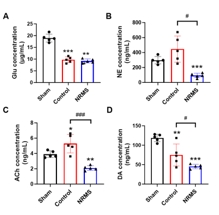
图4 神经根磁刺激可减少脊髓损伤大鼠损伤部位神经递质的释放(图源:Zheng et al., Neural Regen Res, 2025)
为了确定神经根磁刺激是否促进了受损脊髓的功能性突触可塑性,研究人员使用在线工具对不同基因的转录水平进行了GO和KEGG富集分析,列出了所有FDR值小于0.05的通道。神经根磁刺激可提高脊髓受损区域突触可塑性相关基因的转录水平。同时,进行了实时定量聚合酶链反应(qPCR)检测,以证实核糖核酸测序(RNA-seq)的结果。值得注意的是,神经根磁刺激治疗显著提高了脊髓损伤大鼠的Syn mRNA水平。然而,Syn、GAP43和MAP2在假大鼠和脊髓损伤大鼠之间没有明显差异,Syn2、GAP43 和 MAP2 的表达在对照组和神经根磁刺激组之间也没有明显差异(图5)。
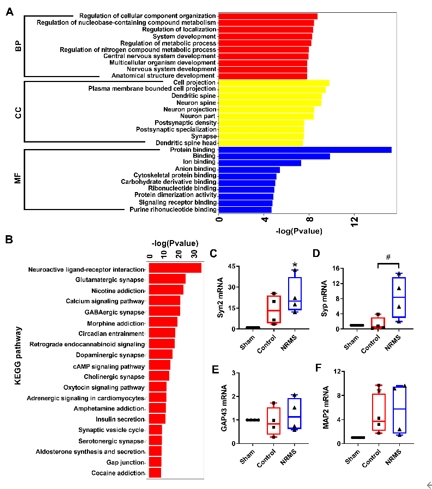
图5 神经根磁刺激 可提高脊髓受损区域突触可塑性相关基因的转录水平(图源:Zheng et al., Neural Regen Res, 2025)
突触功能可塑性的生物标志物是突触可塑性相关蛋白。此次研究和其他针对脊髓损伤的研究证据均显示[20],PSD95和GAP43表达的升高反映了神经根磁刺激治疗对损伤脊髓突触活动和重建的调控(图6)。同时,此次研究中Synapsin II的表达明显减少,这意味着神经根磁刺激对长期突触可塑性的影响可能会导致长期电位和运动功能在更长的时间内恢复。
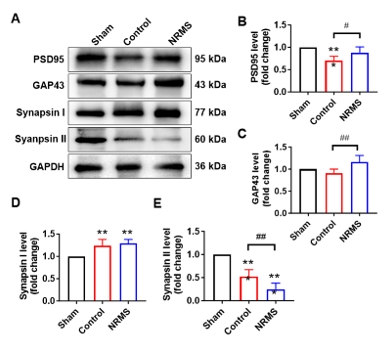
图6 神经根磁刺激 可提高脊髓病变部位突触可塑性相关蛋白的表达量(图源:Zheng et al., Neural Regen Res, 2025)
综上所述,神经根磁刺激可降低炎症反应,减轻神经元的病理变化,并增强脊髓的突触可塑性。因此,刺激L5神经根可通过上升感觉通路激活残余神经纤维,促进T10水平损伤脊髓和感觉运动皮质的突触可塑性。对减轻神经元损伤、促进突触结构和功能可塑性以及减轻损伤脊髓的炎症具有治疗作用,从而导致神经元存活、突触重建和运动恢复。根据华山医院郑娅团队之前发表的结果,神经根磁刺激治疗可减轻MEP潜伏期的延长,因此L5水平的磁刺激也可增加皮质脊髓下行束的兴奋性。这些数据将为L5水平无创磁刺激的临床应用和治疗效果提供依据,并为脊髓损伤患者的新刺激目标提供指导。
虽然线圈的中心点可以通过肌电图刺激大鼠脊髓L5神经根的精确位置,但该研究并没有评估磁场的扩散情况,也没有排除神经根磁刺激的刺激是否会通过与腓肠肌近端肌肉相连的其他运动神经(如坐骨神经)传播。此外,重复经脊髓磁刺激诱导的电流可能会上升到达受压脊髓,并增强损伤区域的突触可塑性,而细胞和分子水平的具体机制尚不清楚。
原文链接:https://doi.org/10.4103/NRR.NRR-D-24-00628
参考文献
[1] Song QF, Cui Q, Wang YS, et al. Mesenchymal stem cells, extracellular vesicles, and transcranial magnetic stimulation for ferroptosis after spinal cord injury. Neural Regen Res. 2023;18(9):1861-1868.
[2] Lee J, An S, Kim O, et al. Test-retest reliability and validity of the sitting balance measure-Korean in individuals with incomplete spinal cord injury. Spinal Cord. 2022;60(7):641-646.
[3] Anjum A, Yazid MD, Fauzi Daud M, et al. Spinal Cord Injury: Pathophysiology, Multimolecular Interactions, and Underlying Recovery Mechanisms. Int J Mol Sci. 2020;21(20):7533.
[4] Jo HJ, Perez MA. Corticospinal-motor neuronal plasticity promotes exercise-mediated recovery in humans with spinal cord injury. Brain. 2020;143(5):1368-1382.
[5] Hendrikse J, Kandola A, Coxon J, et al. Combining aerobic exercise and repetitive transcranial magnetic stimulation to improve brain function in health and disease. Neurosci Biobehav Rev. 2017;83:11-20.
[6] Grover FM, Chen B, Perez MA. Increased paired stimuli enhance corticospinal-motoneuronal plasticity in humans with spinal cord injury. J Neurophysiol. 2023;129(6):1414-1422.
[7] Jo HJ, Richardson MSA, Oudega M, et al. The potential of corticospinal-motoneuronal plasticity for recovery after spinal cord injury. Curr Phys Med Rehabil Rep. 2020;8(3):293-298.
[8] Jo HJ, Richardson MSA, Oudega M, et al. Paired corticospinal-motoneuronal stimulation and exercise after spinal cord injury. J Spinal Cord Med. 2021;44(sup1):S23-S27.
[9] Zheng Y, Zhao D, Xue DD, et al. Nerve root magnetic stimulation improves locomotor function following spinal cord injury with electrophysiological improvements and cortical synaptic reconstruction. Neural Regen Res. 2022;17(9):2036-2042.
[10] Alizadeh A, Dyck SM, Karimi-Abdolrezaee S. Traumatic spinal cord injury: an overview of pathophysiology, models and acute injury mechanisms. Front Neurol. 2019;10:282.
[11] Fiani B, Kondilis A, Soula M, et al. Novel methods of necroptosis inhibition for spinal cord injury using translational research to limit secondary injury and enhance endogenous repair and regeneration. Neurospine. 2021;18(2):261-270.
[12] Biglari B, Swing T, Child C, et al. A pilot study on temporal changes in IL-1β and TNF-α serum levels after spinal cord injury: the serum level of TNF-α in acute SCI patients as a possible marker for neurological remission. Spinal Cord. 2015;53(7):510-514.
[13] Wang CX, Olschowka JA, Wrathall JR. Increase of interleukin-1beta mRNA and protein in the spinal cord following experimental traumatic injury in the rat. Brain Res. 1997;759(2):190-196.
[14] Pukos N, Goodus MT, Sahinkaya FR, et al. Myelin status and oligodendrocyte lineage cells over time after spinal cord injury: What do we know and what still needs to be unwrapped? Glia. 2019;67(11):2178-2202.
[15] Crowe MJ, Bresnahan JC, Shuman SL, et al. Apoptosis and delayed degeneration after spinal cord injury in rats and monkeys. Nat Med. 1997;3(1):73-76.
[16] Robac A, Neveu P, Hugede A, et al. Repetitive trans spinal magnetic stimulation improves functional recovery and tissue repair in contusive and penetrating spinal cord injury models in rats. Biomedicines. 2021;9(12):1827.
[17] Zhao D, Zhang Y, Zheng Y, et al. Double-target neural circuit-magnetic stimulation improves motor function in spinal cord injury by attenuating astrocyte activation. Neural Regen Res. 2023;18(5):1062-1066.
[18] Boyson SJ, Adams CE. D1 and D2 dopamine receptors in perinatal and adult basal ganglia. Pediatr Res. 1997;41(6):822-831.
[19] Venkatesan S, Jeoung HS, Chen T, et al. Endogenous acetylcholine and its modulation of cortical microcircuits to enhance cognition. Curr Top Behav Neurosci. 2020;45:47-69.
[20] Liu H, Xiong D, Pang R, et al. Effects of repetitive magnetic stimulation on motor function and GAP43 and 5-HT expression in rats with spinal cord injury. J Int Med Res. 2020;48(12):300060520970765.





